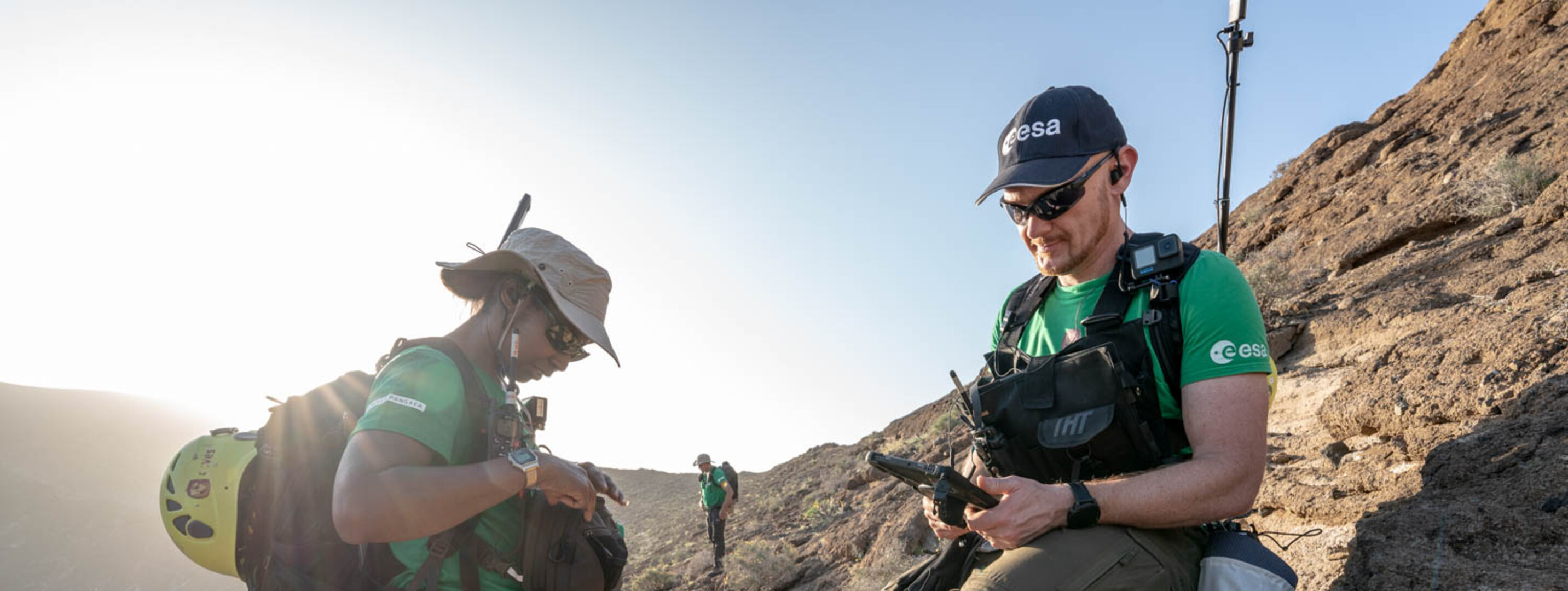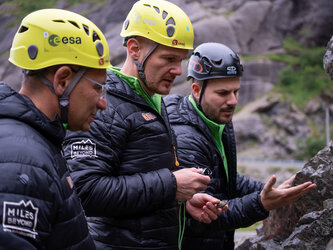

Gearing up for the Moon with Pangaea
No, they are not wearing spacewalk-like costumes nor pretending to be on the Moon. Yet ESA astronaut Alexander Gerst and NASA astronaut Stephanie Wilson are equipped with all the tools they need to explore and understand the geology behind a lunar or martian landscape, in a not-so-distant human mission to unknown worlds.
Alexander and Stephanie arrived at the Spanish Canary Island of Lanzarote for an intense week of training as part of ESA’s Pangaea geology course. For the fifth time, this island is one leg of a campaign that takes astronauts to locations across Europe, such as the Bletterbach canyon in Italy, the Ries crater in Germany or a Norwegian fjord in Lofoten.
Lanzarote is an open-air museum to learn about the geological interactions between volcanic activity and water – two key factors in the search for life.
The Pangaea approach is straightforward: learn to look at other planets by looking at Earth. During weeks of immersive lessons, the space travelers gather a wealth of knowledge in planetary geology and learn how to be the eyes and ears of scientists on the ground.
In this picture, Alexander and Stephanie are exploring the rim of Caldera Blanca, the remains of an ancient volcano. They are wearing kit designed to make the most out of geological sample collection and analysis on-the-spot. Besides the indispensable rock hammers, they are carrying spectrometers and microscopes connected with the all-in-one tool for future space explorers – the Electronic Field Book.
Alexander uses this ‘space tablet’ to map their exploration, keep a record of the samples collected and communicate their observations with the science team.
In Alexander’s words, “this is the next level up. With a new era of space exploration about to begin, it is crucial for us astronauts to get a good foundation of knowledge of planetary geology.”
From choosing landing sites for a future Artemis mission, to designing science operations for a moonwalk, the course challenges space explorers to become field scientists.
Follow the latest news about Pangaea training on Twitter, read all about it on the blog and follow their steps with our Flickr gallery.





